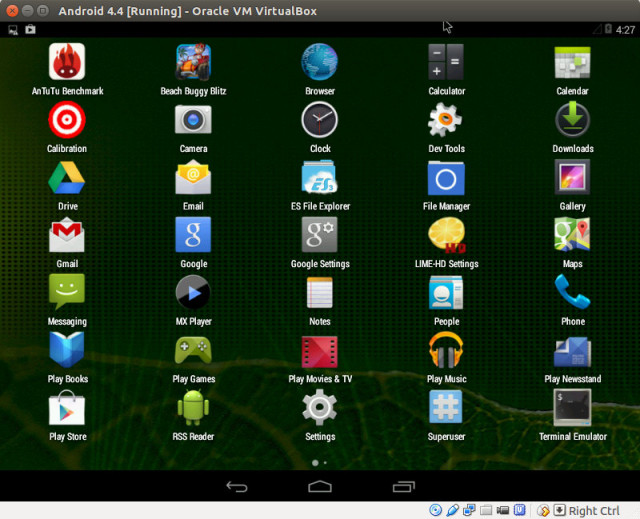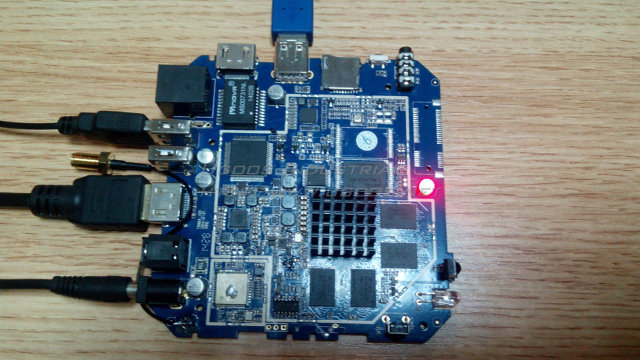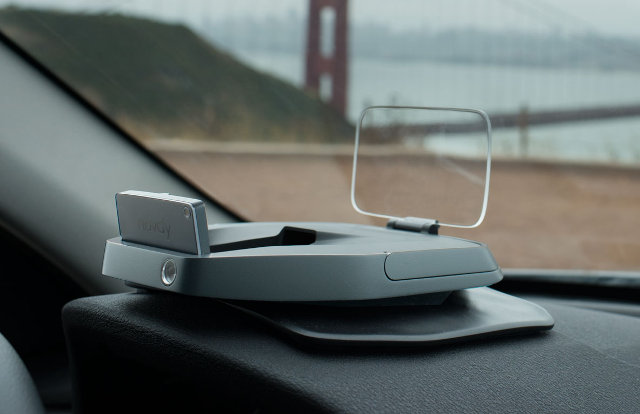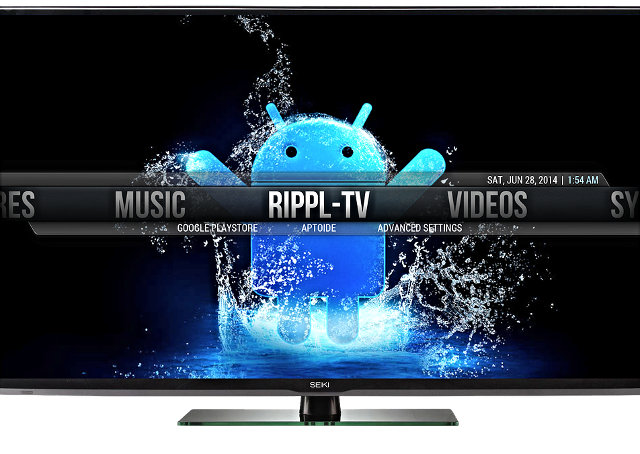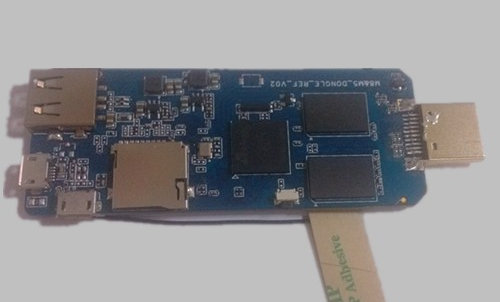As Rockchip RK3288 based tablets and TV boxes are slowly starting to reach end-users, it may be a good time to post instructions showing how to root your Android device. Geekbuying has just published a guide to root RK3288 tablets and media players. The instructions below require a PC or Virtual Machine running Windows XP/7/8, but hopefully instructions to root under Linux similar the ones for RK3066/RK3188 will surface soon. Install Rockchip USB drivers by downloading the latest DriverAssistant which adds support for Rockchip RK3288. Simply extract the files and click on DriverInstall.exe to complete the installation. Download the latest version of VRoot tools. and basically follow the same instructions as for Amlogic S802 root which I’ll summarize below. Make sure USB debugging is enabled in your device (Settings->Developer Options->USB Debug) Connect your RK3288 device to your PC via a USB cable. (OTG port) Start VRoot. It should detect your […]
Android-x86 4.4 Stable Released for x86 Computers, Laptops, Netbooks…
There are several methods to run Android in an x86 computer or laptop, but Android-x86 could be one of the best to do that, and the developers have just released the first stable release for Android-x86 4.4 Kitkat. This release includes support for OpenGL ES hardware acceleration for AMD Radeon and Intel graphics, ffmpeg integration to support HD video playback in apps, and more. The file to download is android-x86-4.4-r1.iso, which you can then install on a USB flash drive:
|
1 |
sudo dd if=android-x86-4.4-r1.iso of=/dev/sdX |
where /dev/sdX is the device name of your usb drive. If you are a Windows users you can use Win32DiskImager utility instead. Android should then boot from USB, and you can decide to run it from USB or install it on you hard drive. I haven’t done this, but instead, I’ve created a new Linux 32-bit virtual machine in VirtualBox without internal storage to try it out quickly in […]
Rockchip RK3288 Temperature Testing and Antutu Benchmarks
There are many upcoming Rockchip RK3288 based devices, and in the listing the CPU frequency varies from 1.6 GHz to 2.0 Ghz. so it’s difficult to know exactly what to expect. Ugoos has done some testing with their UT3 board measuring temperature after Antutu benchmark for different CPU clock frequencies and fan/fanless combinations. The board comes with a rather tiny heatsink which may explain some of the results below. They also added a small fan on top in about half the tests to compare the temperature against an heatsink only solution. Without further delays let’s go through the results: Frequency Antutu Score Temperature (heatsink) Temperature (Back of PCB) Heatsink only Heatsink + fan Heatsink only Heatsink + fan 1.608 GHz 38655 67 °C N/A 70 °C N/A 1.704 GHz 39853 72 °C 50 °C 75 °C 60 °C 1.800 GHz 41440 83 °C 52 °C 85 °C 62 °C 1.920 […]
Navdy is an Android Head Up Display for your Car Controlled by Voice and Gestures
Following up on yesterday’s Android rear view mirrors (ARVM), where I and others mentioned safety of such devices in comments, it has been brought to my attention that there’s a possibly safer alternative with Navdy, a 5.1″ Head-Up Display (HUD) running Android 4.4, that’s placed right in front of your eyes on the top of the dashboard, and coming with both common and different features compared to ARVM. Navdy’s preliminary specifications: Processor – Unnamed dual core processor System Memory – N/A Storage – N/A Display – 5.1″ wide transparent Head-Up Display (HUD) with high quality projector Camera – IR camera for touchless gesture control Connectivity – WiFi (802.11 b/g/n), Bluetooth 4.0/LE Sensors – Accelerometer, e-compass, ambient light sensor Audio – Via Bluetooth or 3.5mm minijack mini-USB port, Internal speaker and microphone with noise canceling DSP Data / Power interface – OBD-II power and data connection to car computer, with optional […]
Android Rear View Mirrors Feature Dual Cameras for DVR Function, GPS, Bluetooth, and More
I first heard about Android rear view mirrors back in 2012 with a solution designed by Huawei running Android 2.3. But this morning, DealExtreme listed three Android rear view mirrors, with model names like EL-H100, EL-H200, and EL-H800 selling between $120 to $216 depending on the features. The mirrors feature 4.3″ to 5″ displays, and all come with dual camera support, run Android 4.0, and seem powered by AllWinner A10 or A13 ARM Cortex A8 processor, with the most expensive (EL-H800) also supporting Bluetooth and GPS. One model also support IR night vision (EL-H100). Features and specifications for EL-H800 model are listed as follows: SoC – AllWinner A13 ARM Cortex A8 @ 1.2GHz with Mali-400 GPU System Memory – 512MB DDR3 Storage – 8GB flash and micro SD slot up to 32GB Display – 5″ TFT Touch Screen, 800×480 resolution Connectivity – Wi-Fi and Bluetooth earphone support, FM radio Video […]
Rippl-TV Android TV Box Brings XBMC Front and Center
Most Android TV boxes come pre-loaded with XBMC, but Rippl-TV goes a step further by replacing the Android home screen, or other common found launchers, by XBMC which is used not only as a media center, but also to launch apps, access the settings, and so on. Everything is done within XBMC. The hardware is very similar to SZTomato / Enybox M8, and Shenzhen Tomato appears to be the company behind this project, or at least promoting it. Rippl-TV hardware specifications: SoC – AMLogic S802 quad core Cortex A9r4 processor @ 2GHz with Mali‐450MP6 GPU System Memory – 2GB DDR3 Storage – 8GB NAND flash + SD card slot Connectivity – 10/100M Ethernet, dual band Wi‐Fi (2.4GHz/5GHz) & Bluetooth (AP6330) Video Output – HDMI 1.4b, AV. HDMI supports 1080p, 4K2K 30fps Audio Output – HDMI, AV, and optical S/PDIF Video Codecs and Containers – MPEG1/2/4, H.264, AVC, VC‐1, RM/RMVB, Xvid, […]
Ugoos S85 Android HDMI TV Stick Features Amlogic S805 Quad Core SoC, Supports H.265 Video Decoding
HDMI TV sticks used to be popular, but as processors became more powerful, it became more and more challenging to put new SoCs in such a small form factor due to thermal issues. For example, there’s no HDMI TV stick powered by Amlogic S802 (4x Cortex A9 @ 2GHz), as even TV boxes may have troubles keeping things cool with two largish heatsinks. But the new Amlogic S805 quad core ARM Cortex A5 is more power-efficient, and Ugoos will soon release S85 model in an HDMI stick form factor. For now, they’ve just published some pictures of the board. Ugoos S85 specifications: SoC – Amlogic S805 Quad-Core Cortex-A5 @ 1.5GHz with Quad Core ARM Mali-450MP GPU @ 600MHz System Memory – 1GB DDR3 Storage – 8GB NAND FLASH + micro SD card slot Video & Audio Output – HDMI 1.4b with CEC (male connector) Video Codecs – MPEG1/2/4, H.265, HD […]
Some Projects on Nvidia Jetson TK1 Development Board: Nintendo Emulator, USB3 Webcam, and Robotics
Nvidia Jetson TK1 is a development board powered by the company’s Tegra K1 quado core Cortex A15 processor, and especially a Kepler GPU that allows for OpenGL 4.4. It has shipped to developers around April/May, and some of them have showcased their projects, or tested some hardware. Dolphin Emulator on Nvidia Jetson TK1 Dolphin is an emulator for Nintendo GameCube and Wii console that supports full HD (1080p) rendering, and run on Android, Linux and Mac OS, and there’s also an Alpha version for Android. Ryan Houdek (Sonicadvance1), one of Dolphin’s developers, has leveraged Kepler’s OpenGL support via Nvidia’s GPU drivers, to port the emulator to the platform running on Ubuntu, but it should work as well on Tegra K1 hardware running Android such as XiaoMi MiiPad tablet. You can watch Mario Kart: Double Dash demo running at full speed on the Nvidia board below. According to the developer, such […]



